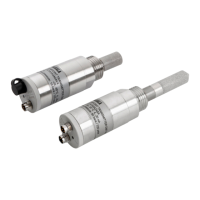Despite the specification, some Modbus masters may expect "big-endian" word order (most
significant word first). In such a case, you must select "word-swapped" floating point format in
your Modbus master for the Modbus registers of the device.
Reading the measurement data registers with incorrect floating point format setting may
occasionally result in correct-looking values. It is highly recommended to first try reading the
register number 7938 (floating point test) to see that you have configured the floating point
format correctly on your Modbus host system.
A complete 32-bit floating point value should be read and written in a single
Modbus transaction.
A.3.2 16-Bit Integer Format
Some 16-bit integer values in the data registers are scaled to include the necessary decimals.
The scaling factors for those values are shown in the register tables.
Table 25 16-bit Signed Integer Format Details
Value Description
0000
hex
… 7FFE
hex
Value in range 0 … 32766
7FFF
hex
Value is 32767 or larger
8002
hex
… FFFF
hex
Value in range -32766 … -1 (2’s complement)
8000
hex
Value is not available (quiet NaN)
Some values may exceed the signed 16-bit range even in normal operation. To
access such values, use the floating point registers instead.
A.4 Modbus Registers
Registers are numbered in decimal, starting from one. Register
addresses in actual Modbus messages (Modbus Protocol Data Unit (PDU)) start
from zero.
Please check the reference documentation of your Modbus host (PLC) for the
notation of Modbus register addresses.
CAUTION!
DMT143 User Guide M211435EN-J
76

